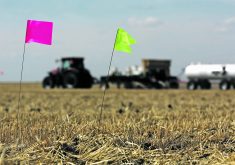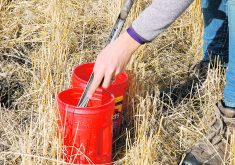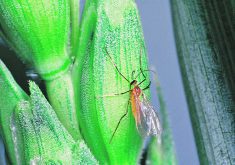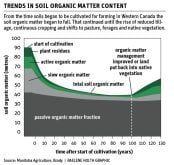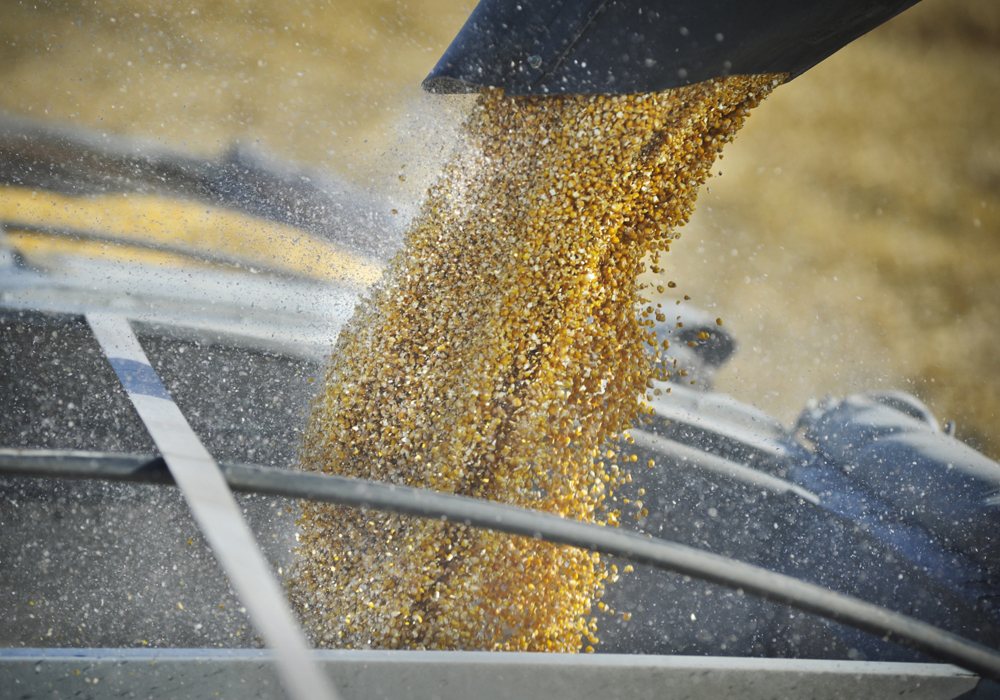Commodity prices continue to stay strong, but input prices such as seed and fertilizer are also at record levels. While the two should have a moderating effect when it comes to over-applying an input such as nitrogen, in many cases this doesn’t seem to be the case.
For years I was a strong advocate of applying nitrogen to an optimum level for a farm or field. From my perspective in east-central Saskatchewan, I saw many farmers leaving money on the table — so to speak — by under-applying their nitrogen.
In those days in the1990s, I worked for a retail organization as a regional agronomist. I spent many hours at meetings or over the kitchen table advocating for the use of more nitrogen.
If my notes are accurate, in 1996 the average nitrogen application for canola was only 65 pounds and the average yield was in the mid-30s. We kept hearing of those mythical yields of 55 to 60 bushels per acre coming from the Red River Valley, but very seldom would we surpass 40.
In the mid 2010s when things finally started to dry out, there was an awakening when it came to nitrogen and crop production. Farmers started putting on rates of nitrogen that were required for their yield targets, and voilà, they started achieving their targets. We started seeing 60 bu. canola crops across the area for the first time in 2016.
Fast forward to today. Commodity prices, while not at the records we saw a couple of months ago, continue to be strong. And thanks to timely rain this season, we are coming off another year of great yields.
However, a trend that I am observing is farmers seem to be, in many cases, setting unrealistic yield goals, and then they fertilize to achieve them. From an economic perspective, they are wasting money, and from an environmental perspective, they are contributing to increasing greenhouse gas emissions.
I’ve talked to several growers and reviewed their outcomes from 2022. Here is a bit of a scenario that, while not exactly as stated, is very similar to what I have heard:
- What was your target wheat yield? 80 bu. per acre.
- What was your nitrogen rate minus soil plus fertilizer? 160 lb. of nitrogen.
- What yield did you achieve: 70 bu. per acre.
It’s the same type of conversation with canola:
- What was your target canola yield? 70 bu. per acre.
- What was your nitrogen rate minus soil plus fertilizer? 140 lb. of nitrogen.
- What yield did you achieve? 60 bu. per acre.
So where do these numbers come from? A lot of them originate with crop uptake and removal charts developed by the fertilizer industry.
I am currently looking at a chart published by Fertilizer Canada and dated 2001. From it we see that a 40 bu. wheat crop will take up 76 to 93 lb. of nitrogen.
Fast forward to a second crop uptake and removal chart dated 2017. This chart and many others show crop uptake in pounds of nitrogen per bushel.
Taking the high of the above (93) and dividing it by 40 comes up with 2.3 lb. per bushel and has allowed us to build crop uptake and removal calculator apps for our smartphones. These apps are available from various organizations and companies.
Here are a couple of issues I have.
We are ignoring the fact that there are variations in what can be produced by a pound of nitrogen. Looking at the numbers above, we see about a 20 percent variation from low to high observations. By using the high number, we are not practising one of the 4R nutrient stewardship best management practices because the right rate may be 20 percent or more high.
By moving from the initial chart based on crop requirements for 40 bu. wheat crop to the requirements to produce a bushel of wheat, you assume that it takes 2.3 lb. of nitrogen to grow a bushel of wheat, whether it is the first unit of nitrogen applied or the 100th.

You assume that if you apply 230 lb. of nitrogen you will get 100 bu. per acre. Nice.
The problem is it ignores what is referred to as the nitrogen response curve. These curves have been developed by researchers who have collected numerous site-years of data and combined them to come up with an average response.
One thing that is consistent with all nitrogen response curves is that the yield goes up on a linear until it reaches a point where the addition of a unit, in this case 2.3 lb., of nitrogen will no longer produce a bushel of wheat but actually something less than a bushel.
This continues with the addition of additional increments to the point where there is no additional production coming from that application. In fact, following additions may cause a yield decrease.
This plateauing of the curve may be caused by a number of factors:
- A weather issue, such as a lack of rainfall.
- Limitations of other nutrients.
- The genetic potential of the variety being grown.
- Some other production issue.
Whatever the issue, once this plateau has been reached, further nitrogen will be wasted, or worse yet, lost from the farm and contribute to greenhouse gas emissions or water pollution.
To see what happens as we approach or pass the peak of a yield curve, visit www.gov.mb.ca/agriculture/crops/soil-fertility/nitrogen-rate-calculator.html. The site links you to a calculator you can download and plug in your own yield, commodity prices and nitrogen fertilizer costs. You can then see where the crop return plateau occurs and at what point you start losing money.
Remember that when fertilizer is applied in inadequate amounts, it may cause a loss in production and quality of important agronomic crops. However, too much application of fertilizer causes emission of nitrogen oxides such N2O, NO and NO2. All these gasses contribute to the greenhouse effect or lost as NO2 into groundwater.

Research tells us that at the global level, atmospheric nitrogen oxide increases from 0.2 to 0.3 percent every year.
So, what can you do for the upcoming year to optimize your nitrogen applications? I would suggest you review the 4Rs for nitrogen:
Right rate — Determine a realistic yield target and fertilize to this target. Using variable rate nitrogen applications allows you to set a target yield in each of the zones you have mapped and specify a nitrogen rate for each zone.
Right source — Select the nitrogen source that fits best into your application method and timing. Use products containing urease and/or nitrification inhibitors when the situation calls for it.
Right timing — If you put the product down in the fall or not will determine your timing for this year. And, while the experts still recommend a spring over a fall application, my experience and many research papers confirm that a late fall banded treatment on well-drained fields and/or zones of a field will yield equal to a spring banded or side banded treatment.
Right place — There is only one thing to remember when applying fertilizer in Western Canada — get ’er in the ground. Surface applications of any product at any time only hope, at best, to be as good as a banded application at the same time.
Thom Weir PAg is a certified crop advisor and professional agrologist in the Yorkton, Sask., region. You can reach him at thom.weir@farmersedge.ca.






